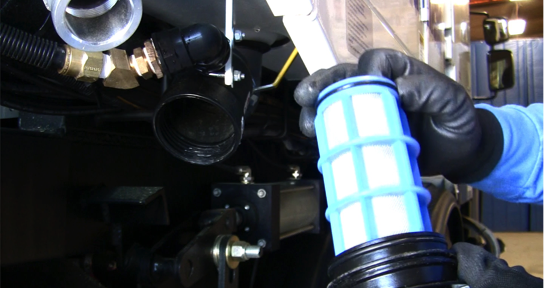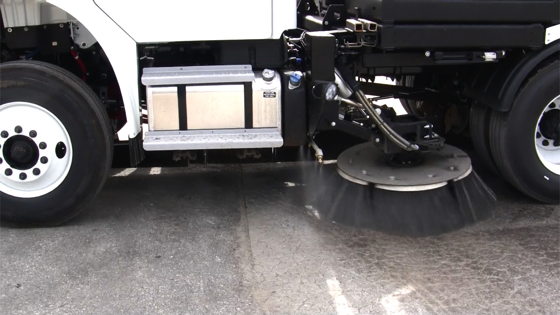By Jim Adair, Director of Product Management at Schwarze Industries
Springtime is upon us, which for sweepers, means spring cleanup. In many parts of the country, it’s time to pick up what was put down for snow and ice control and the debris that got buried in it. The first few sweepings are usually the heaviest and the dustiest. A perfect time to make sure your dust control system is working at its optimal performance.
Start with your sweeper’s suction strainer, make sure that it is clean; it’s a good idea to wash the filter with soap under running water. These filters can visually look clean, but can contain an almost transparent like slime that can prevent the full flow of water from reaching the pump. A diaphragm pump can run dry without water longer than it can with a plugged filter as the vacuum the pump pulls, damages the membranes.
Next is the pump. Make sure that it is flowing at the correct GPM (Gallons Per Minute) and with the proper pressure. You can check this by connecting a hose to the output of the pump and filling a 5-gallon bucket while timing it. You can pick up a water pressure gauge at most any Lowes, Home Depot or plumbing store. The gauge will already have a female garden hose connector on it. The gauge can then be connected to the hose bib. Open this bib and turn on the pump to check its pressure.
Downstream from the pump on many sweepers are the valves that open and close to direct the water to the spray nozzles. With most electric valves over time, they can have a buildup of rust, slime or calcium and this can reduce the flow of water or prevent the valve from closing, which can be evident from puddles of water under the nozzles of a parked sweeper. Clean this valve by removing the coils, then the stems and washing the plunger with soap and water or a solution of CLR to remove calcium, lime and rust deposits. This solution is also perfect for cleaning the spray tips.
The spray tips and tip filters are also an essential part of the dust control system. If the spray tip is clogged then, of course, it can’t do its job. Never drill out the spray tip. Drilling the tip changes the spray pattern and damages the tip so that it no longer atomizes the water. The best way to reduce dust and conserve water is to atomize the water at the spray tip. The fine fog of water mixed with the fine particles of dust weigh the dust down and drop it to the ground so it can then be then picked up by the sweeper. Don’t toss the tip filters to the side either. If you leave the tip filter out because they get clogged, your spray tip without the filter will get clogged in a fraction of the time.
If you have to clean your spray tips all the time, you may want to consider adding a large fine mesh filter between the pump and valves such as a five-micron cartridge style filter, an option available from most any sweeper manufacturer.
With the dust control system fully functional, a trick to help reduce dust even better is to add a surfactant to the water. Doing this lowers the surface tension, allowing the water to mix with the dust and not bead up, this is especially important when you have hard water problems. These surfactants also work as a wetting agent and can be purchased at any farm supply or chemical supply store. In a pinch, biodegradable dish soap will work as well, and will even leave everything smelling lemony fresh.




